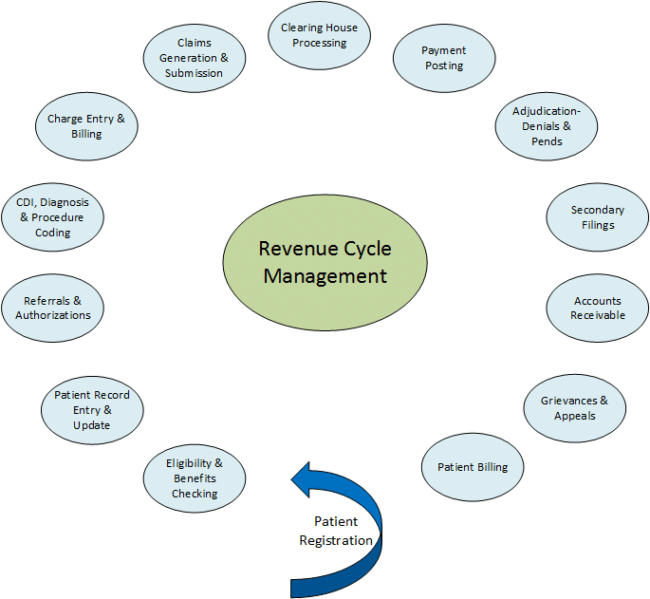There is an enduring call for transformation across the healthcare landscape. One area where transformation can be particularly impactful for healthcare organizations and their patients is clinical processes. We’ll discuss the key components and benefits of optimization, as well as practical strategies that can be implemented to improve the clinical experience.
Today, the effectiveness of a clinical encounter has a more significant impact on quality outcomes for the patient and reimbursement to the healthcare provider than ever before. Not only are healthcare regulations evolving and payment models changing, but we are also learning that patient expectations have matured.
In an era where patients can Google and learn about their health condition, a strong emphasis is placed on engaging the patient in shared decision-making about their care. Informed patients, who better understand their options and the pros and cons of care strategies, are more engaged and more likely to follow through with the parts of their care plan that they can personally impact.
Example: Improving Hospital Discharge Processes
Take, for example, hospital discharge procedures. Organizations can reduce hospital readmissions just by having a clear process in place that includes a few basic components. Reducing hospitalizations is obviously important from a patient care perspective, but with hospital readmissions directly impacting Medicare reimbursement rates due to the Hospital Readmissions Reduction Program (HRRP), it has become increasingly important for organizations, too.
Key Components of the Hospital Discharge Process
- Ensure the discharge summary information gets to the primary care physician.
Benefit: Allows providers to coordinate their care efforts and positively impacting the patient’s overall health. - Schedule a follow-up appointment for the patient before they leave the hospital.
Benefit: Encourages patients to follow recommendations and continue prioritizing appointments. - Inform the patient about what to expect in the days following discharge and what to do if they have concerns, issues, or returning symptoms.
Benefit: Gives patients confidence in their health status, reduces the number of unnecessary calls, and ensures they understand when and how to seek help if necessary. - Initiate follow-up phone calls for patients at high risk of readmission due to the frequency of previous ER visits or the complexity of their health situation.
Benefit: Increases the likelihood of early intervention for the at-risk population.
From the example, you can see that the suggested procedures are relatively simple to carry out and the juice, as they say, is well worth the squeeze. Any difficulty experienced is typically in the form of opposition to change. The following list, covers the strategies for getting started on the road to clinical process transformation, including that all-important change component.
Key Strategies for Effective Clinical Process Transformation
1. Establish Leadership and a Clear Vision
In order for clinical transformation to succeed, you must have effective clinical leadership who participate in and assist with driving the change. It is quite common for middle management such as practice managers or hospital unit directors to be put in the position of driving the change, with higher level leadership derailing initiatives through lack of participation in and support of the projects/initiatives that are needed.
The “Change Vision” should be crafted with input from the staff, written down, and communicated to all staff members to elicit their support and understanding of the goals for the future. Change management is a powerful tool to manage resistance and help staff members to understand what is changing, why, and how it affects them so they can be successful.
2. Optimize Technology
If you’re a hospital or hospital system, you have teams of IT professionals monitoring your EHR. However, smaller physician practices often lack the level of IT management needed. All organizations should regularly perform checkups on their EHR, including reaching out to vendors to ensure they are using the most updated version. You should also take that opportunity to evaluate new features that have become available as some could be time and cost saving additions.
Keep in mind that even though upgrading your EHR may result in increased costs or require process changes, those are often overwhelmingly justified by your ability to more effectively optimize care for at risk patients.
Patient portals are time and money savers. They can save your office hundreds of phone calls per month and minimize dreaded “call backs”. In addition, they improve the timeliness of response to patient care inquiries.
Simple reports, dashboards, and data analytics from EHR optimization can often provide valuable insights into the care of your patients, such as risk stratification, identification of patients more likely to visit the ER, and management of diabetic or other high risk patient populations.
3. Identify Processes That Need to Change
Evaluate your processes to determine where improvements can be made and how the change will be measured. For example, when evaluating how to reduce ER visits and hospital readmissions, ask the following questions to plan out how would you address this issue for your patient population:
-
- Do patients need better instructions for when to call the office versus going to the ER?
- Do patients know that your team is ready and willing to take their call and that you have 24/7 coverage?
- Do patients know that their primary care physician and specialist will collaborate on their care? This is a change of mindset for patients and providers alike and will need creativity to re-educate and prepare for this focus.
- Do patients need an outreach call from your office to check on them based on your concern for their level of risk?
- Do you have a risk stratification process in place? Do you have a “red light, yellow light, green light” or “1, 2, 3” risk level assigned to each patient? If a “red light” patient calls the office does your receptionist have a way to identify him or her as a high-risk patient who should receive heightened attention?
- Do your patients have a list of things to avoid?
- Do your patients know when to take or hold specific medications?
4. Prepare Your Data and Systematically Analyze Results
In order to show improvement, it is imperative to document good baselines from which to make comparisons. For example, if you’re going to put efforts in place to improve your diabetic patient A1c levels, you need a baseline for what the A1c levels in your diabetic patient population currently are to measure future levels against.
Breaking down the changes into measurable bites will allow you to document whether your change was an improvement or not. In the A1c level example, the first step is to document how many diabetic patients are in your panel now. Then, if your first process improvement step is to call all patients who haven’t been seen in a year and try to get them scheduled for an appointment, identify how many diabetic patients on your panel haven’t been seen in a year. That way, you can monitor that number on an ongoing basis for comparison. If the number of patients who have not been seen in a year is reduced, you know your step was effective.
5. Train Staff
When processes change it is imperative to dedicate time to training. To increase the odds that employees will follow new procedures, be sure to educate them not only on how to do the job, but why the process is changing. This will help them feel invested in the change and take ownership of the process. In return you’ll generate more accurate collected. Your training plan should:
- Study current methods of documentation within the practice
- Determine the best documentation processes for what you’re trying to achieve including who should document what, when, and where.
- Clearly communicate to all participating staff. Include quick reference guides with screen shots.
- Monitor data collection
- Communicate results to all staff members to reinforce the importance of the process and encourage continued use of the correct processes and documentation.
6. Put Your Clinical Transformation Plan Into Action
Once you have worked through the above components, you can move on to the fun and rewarding part. It is time to begin utilizing the creative forces of your staff to actually improve patient care processes.
Remember a key “Lean” principle is that the guy doing the work is the best one to know how to improve the process. Create opportunities for staff to brainstorm about how to do things better. Take suggestions seriously and initiate mini-process improvement projects to keep things moving forward.
Overcoming Barriers
Common barriers to implementing clinical process transformation are time, cost, and staff. There is already more to cover in the typical office visit than there is time to do so. Therefore, many of these changes need to be organized and implemented by the entire team. Getting assistance from a professional experienced in improving clinical processes and managing change can fast-track success.
If you’d like to transform clinical processes and aren’t sure how to get started, we’d love to help! Contact us to get started.





